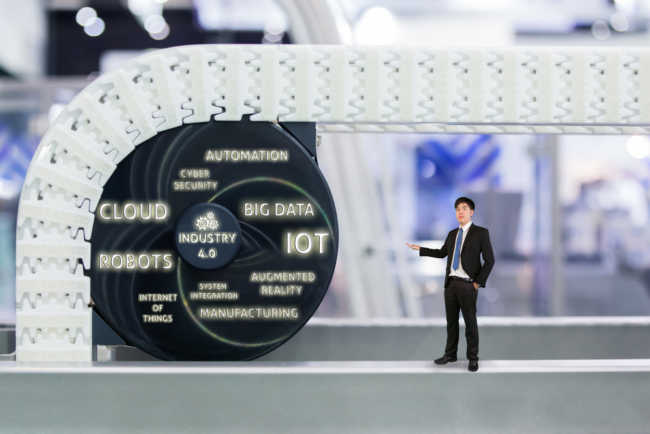Seven Lessons for Industrial IoT and Data Teams to Remember in 2018
In the Industrial IoT world, we often hear comments like “Let’s make our existing machine or tool connected, and later we will find the way to create value or monetise it!” or “We need more and more data so we can solve business problems.” Is this approach enough? Is it a good idea to start the thinking process from connecting the products and collecting huge amounts of data?
In the Industrial IoT space, data and IoT teams face challenges which have many similarities. This inspired me to write about some lessons for both the data and Internet of Things (IoT) teams of companies which adopt IoT services and technologies. We should not forget that data and connected products are like the two sides of the same coin.
Lessons for IIoT Teams and Analogies in Data Analysis Teams
Lesson 1: Start from the problem or need you want to solve, not with the solution
Many companies start developing connected tools, machines or infrastructure without conducting the necessary analysis of their clients, their business models and the potential challenges. The driver for their decision sometimes is just what the competition is doing or what is “cool” so they can create some buzz around it with good public relations. Apparently, these are not good enough reasons. If you don’t ask the whys, there are many chances to end up wasting money, time and effort without seeing the impact in your operations, business and profits.
The analogy with data analysis: The same is true for data analysts, who may start analysing huge amounts of data without knowing first what they are looking for. What is the big question you are trying to answer? The advice here is, again, to start from the problem you want to solve, not from the data.
Lesson 2: Prioritize the implementation of IIoT projects
Everyone in IoT has good ideas, and especially in IIoT. The technology has progressed so much that companies these days have the chance to make their ideas real quite easily. However, considering how rapidly technology, regulations, business needs and clients change, it is critical to prioritize the most impactful problem you want to solve and to decide then which IoT project you should implement. Choosing, for example, the most economical, easier or coolest project is not often the best idea. Define first your criteria (long-term impact, competencies, integration with existing solutions, etc.) and then prioritize.
The analogy with data analysis: It is the same for data analysts. Which question is worthy to solve first? Where should you focus your time and energy?
Lesson 3: Think big, start small, fail quickly (learn) and scale fast.
We need miniature versions of our grand idea so we can validate its parts, and then iterate and tweak constantly. We see quite often that big corporates think big, but then plan and prepare for years until they launch the first product in scale or implement an IoT solution throughout their business. This approach can have several risks since the technology and trends change quicker and the competition (especially from start-ups) is moving faster. Disruption is coming from many sides and it is quick. Besides, if we don’t start small, we will not be able to receive the valuable feedback of the market, adjust our products and decide which we will finally scale. The “start small” tactic also helps in engaging with internal stakeholders and keeps their interest and commitment high.
The analogy with data analysis: In the beginning, you need to test samples of your data quickly, without affecting the whole datasets. You need to fail and learn quickly, try again, leverage old lessons and finally find the answer to the question you are looking for.
Lesson 4: Break the silos of the company’s departments and data.
When we plan to start designing and later executing an IIoT project, the senior leadership team needs to ensure the collaboration, support, and involvement of stakeholders from different departments to use the expertise of different fields and guarantee the continuous commitment of all departments. Otherwise, we may see the example of a single team being the project leader without any other department to care about it, as though it were not their job or responsibility. This attitude can be catastrophic for any IIoT project, especially for the big ones. Moreover, try to keep regularly engaged in the process all relevant stakeholders with updates, workshops, small deliverables and more.
The analogy with data analysis: We need the same approach regarding the data. Each department ideally needs to have the data in the same format and provide it easily and in a secure way to the analysts, so they can integrate it and play with it. Integrating data from different departments, products and services could create insights of which the company had no idea. In some cases, it can be even a game changer.
Lesson 5: Explain the data with storytelling.
Merely collecting data from sensors or internal systems and later integrating all these datasets is not enough. The data needs to be analysed and then presented simply, in the right context and an attractive format either the audience is internal or external clients. The best way to achieve this is by using the efficient method of storytelling, combined with proper visualization. To be clear, I am not referring to the dashboards and capabilities of the IIoT analytics platforms. Instead, I am focused on the importance of how humans (analysts, platform users and so on) read and describe the results of the analysed data. Using the storytelling method, most of the employees, decision makers, and clients will be able to understand and use the results. Analogy with data analysis: The big-data team (or teams with similar names) needs to be able to transform the data to information, and the information to actionable insights for the rest of the business (or clients). Insight is more than just summary—it is those hidden patterns in the data that cannot be easily seen, but a good data analyst can find them and communicate them effectively with the right storytelling and visualization.
Lesson 6: Empower, train and give exciting problems to your IIoT star employees so you can keep them during 2018.
The IoT is entirely new, so industrial companies that are pursuing Internet of Things and big-data strategies are finding it challenging to recruit the right talents with a comprehensive understanding of data, telecoms, software, commercials, strategy, etc. Especially, if we consider that they are competing for talents with many tech companies, such as Google, IBM, CISCO, Vodafone, etc. For this reason, it is important that a company invest continuously in the training of its employees, especially in the areas of data, business, and technology so that they can have a broad understanding of IoT applications and their implications. It is one additional way to reduce the silos culture. Otherwise, not only will the company continue hiring workers who lack the modern skills a competitive business environment requires, but it will also lose its best talents. Both results for the company are enough to forecast a future with limited potential for success. Furthermore, empowerment for training and career development are essential to keep the workforce motivated and inspired. Considering the lack of IoT talents, it is a good idea for a human-resources team to try to match business needs with the interests and career goals of its ambitious employees. Otherwise, it will be difficult to keep the best talents in an organization for a long time.
The analogy with data analysis: Analytics expertise is in particularly short supply, and it’s expected to become scarcer as the field expands. For many companies in the IIoT sector, the key hire today is often the data scientist or data architect, but often this is the most challenging. Therefore, continuous empowerment, training and involvement with exciting but difficult problems could help to increase the data employee retention rate.
Lesson 7: Continuously apply all of the above six lessons.
The above lessons need to be remembered for a long time since IIoT and data projects are long and evolve gradually. If we apply these tactics in the beginning, but forget these lessons after six or eighteen months, it is very easy to end up making some big mistakes or losing good opportunities.
 Dimitrios Spiliopoulos is passionate about the IoT and new technologies, and has earned an MBA degree from the top-tier IE Business School in Madrid. Currently working as a contractor for the IoT team of Telefonica in London, he previously worked for the global IoT team of Vodafone. Dimitrios is a mentor at several IoT programs, such as IoT Startupbootcamp and IoTUK. Before his MBA he worked in manufacturing industry, among other industries, helping companies optimise their export strategy and business development.
Dimitrios Spiliopoulos is passionate about the IoT and new technologies, and has earned an MBA degree from the top-tier IE Business School in Madrid. Currently working as a contractor for the IoT team of Telefonica in London, he previously worked for the global IoT team of Vodafone. Dimitrios is a mentor at several IoT programs, such as IoT Startupbootcamp and IoTUK. Before his MBA he worked in manufacturing industry, among other industries, helping companies optimise their export strategy and business development.



